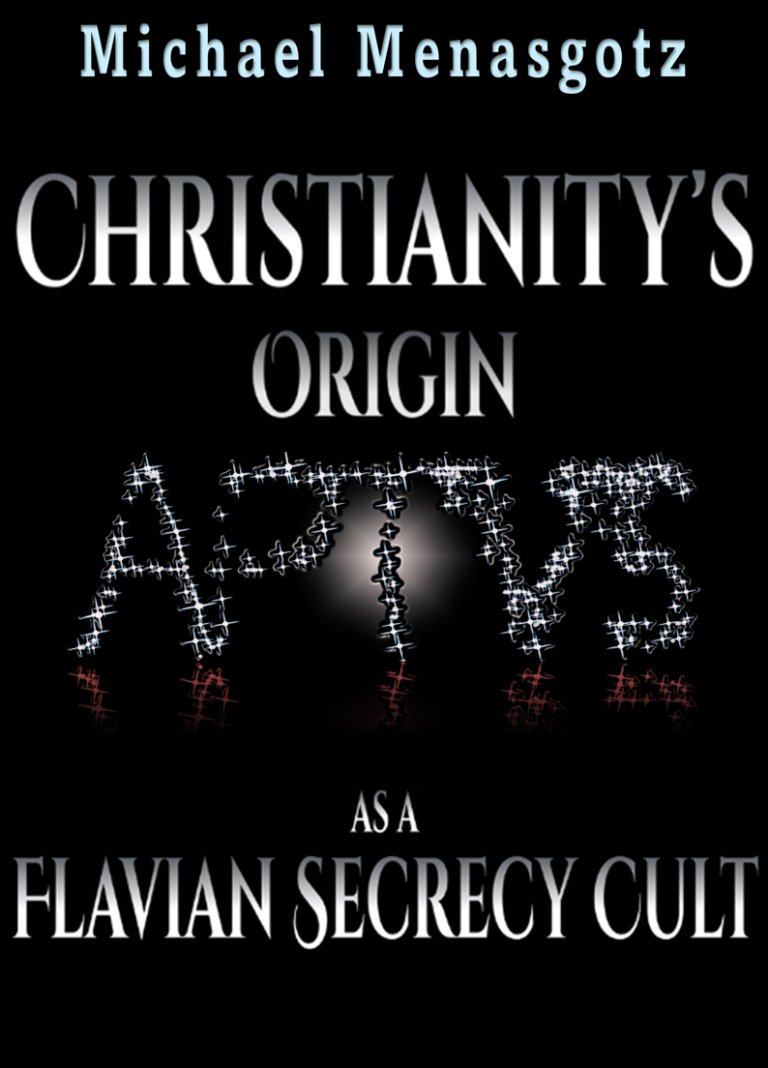
CHRISTIANITY'S ORIGIN AS A FLAVIAN SECRECY CULT
Could it be that history’s greatest faith might have been Rome’s boldest invention?...
Imagine Jerusalem in 69 AD, home to the Jewish people who dared to stand up against Rome. General Vespasian and his son Titus - two future Emperors of Rome - surround the city with their legions to crush Judaism and recapture Judea. But whilst their victory was won by the sword, what if their greatest weapon was the pen?
This book explores the controversial idea that the Gospels — the very foundation of Christianity — were crafted under the watchful eyes of Rome’s rulers. The theory suggests that the figure of Jesus, as described in the New Testament, was not merely built upon the existing Pauline literature, but modeled on Emperor Titus himself, so that his three year ministry in Judea would echo Titus' three year campaign in the same locations.
The teachings of "turning the other cheek" to oppression and “rendering taxes to Caesar”, take on a new light when seen as the handiwork of Caesar himself. Likewise Jesus' teachings that the greatest faith in Israel is a Roman commander, that roman soldiers should be content with low pay, or that the Jewish ten commandments can be fairly summarized without including the first one about only worshiping the Jewish god.
Why would Rome do this? Traditional Flavian Origin theory suggests it was to replace messianic revolt with a message of obedience. To turn would-be rebels into followers of a faith that quietly served the empire’s interests, and who would pay taxes to Rome.
But no. This book details remarkable new evidence, showing that the plan was more subtle and ambitious. The objective was to convince both Jews and Roman soldiers to follow Jesus and eagerly await his second coming, as a precursor to showing that since Jesus' story "prophetically" mirrors that of Emperor Titus (the same man who performed the act that Jesus says will reveal his 2nd coming - destroying Jerusalem) it follows that Titus must be the 2nd coming. This explains why Jesus' story has those parallels with Titus' story.
And there's more. There are three sequences of parallels between Luke and Titus' official record of his campaign (Jewish War). Not only do these involve both documents parodying each other, but there is a third sequence where both stories mutually parody the Passover ritual requirements, and Menasgotz shows that this was done in a way that proves the two stories had to have been written together. This is shown mathematically to extraordinarily high confidence. The reason the author needed to do this, is that merely turning Jews and Legionaries to worship Titus as Jesus' 2nd coming still wasn't enough. The Emperor wanted them to become *pure* emperor worshipers. To achieve this a final revelation was required, in which it would be demonstrated that Luke has the same origin as Jewish War (explicitly from the roman government), and thus Jesus' story is a fictional parable about their new god, Emperor Titus.
"Christianity's Origin as a Flavian Secrecy Cult" invites you to examine the evidence, see the parallels for yourself and the pattern they are arranged in, and understand why it can be mathematical demonstrated that the pattern is genuine and intentional.
History is full of surprises. Join us as we follow the clues, challenge old assumptions, and uncover a narrative that may have shaped the world in ways we’re only beginning to understand.
Whilst the book is the best resource to understand my discoveries and thesis, I have also made much of my research available in published papers.
